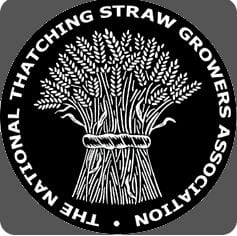Why an article about 2020/2021 Thatching Straw
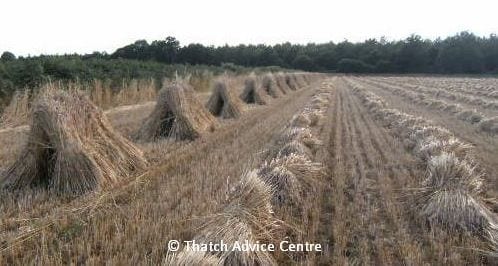
So many calls, questions and discussions about the straw situation. The 2020/2021 Thatching Straw harvest conversations have resulted in us deciding to write this article. How is the situation affecting thatchers and homeowners! At the time of writing Historic England have not yet published their awaited information “We will soon publish initial guidance aimed at thatchers, building owners and conservation officers” and we will endeavour to keep you updated on this when they do.
In the meantime we thought we may as well put down what we know. It is obviously an emotive subject. It is best for everyone to look at the situation as a whole rather than from a single view point. Hopefully we are putting points from growers, homeowners, thatchers and conservationists. We endeavour to help everyone understand the various points of view in navigating the next few months, but we have got this far. Thatching straw shortages and tricky situations are not a new phenomenon, as you can see from previous articles of ours and others.
Straw Availability
Background
Thatching straw is special in that it is grown from the old (mainly wheat) seed varieties. These wheat varieties are no longer part of the mainstream cereal crops used in general farming. In the past the thatching straw was a by-product of the cereal crop but this is no longer the case. The wheat straw and hybrids are now grown especially by those with the knowledge, skills and seed to plant the crop. These crops have longer straws and need to be harvested and produced in a particular way to provide material suitable for thatching. In short it is a speciality crop, grown and produced by specialists. Remember this crop is also weather dependent.
The 2019/2020 growing season
This time was wet and we had a dry spring/summer. This had an effect on the germination and growth of some crops. Regional variations, luck with the land, location and weather have therefore meant that there has been some failures and some good straw grown. The consensus therefore seems to be that, although there was some very good straw about, the yield was low. Some straw is not of such good length or quality. It can be used, but thatchers’ skill in sorting and applying to the roof may become paramount.
These two things have inevitably led to the usual cry of “straw shortage” so here we wish to discuss this and if and what that means along with how much of a problem it may be.
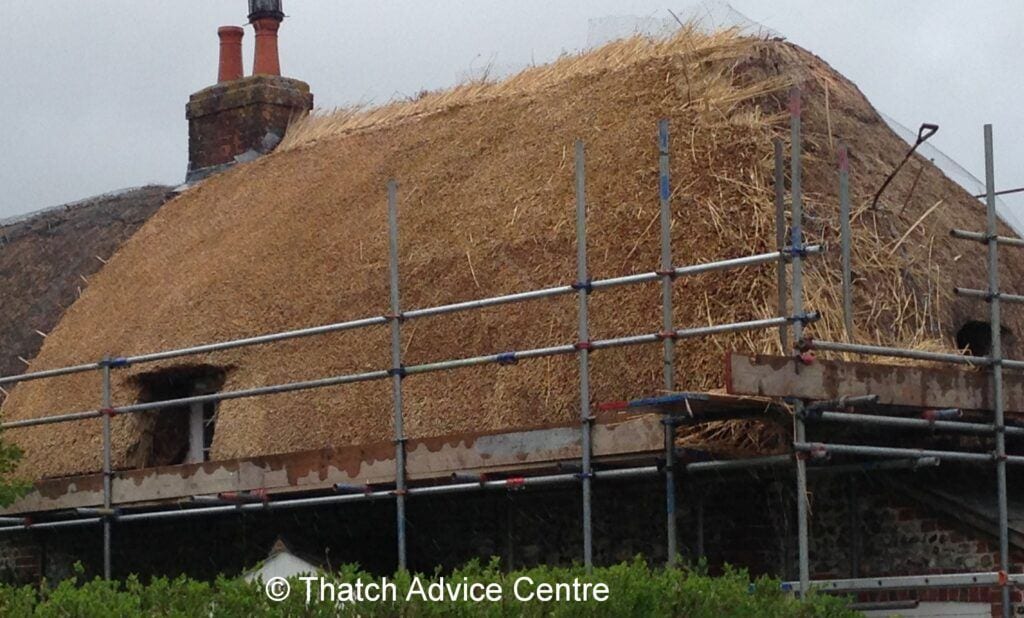
The problems
- Straw is used for main roofs coatwork and also on the majority of ridges. Shortages result in problems of thatchers being able to source suitable materials to do their work.
- Problems with variable harvests are not new. In the past a patch or sheet was applied to a failing roof until the next harvest when suitable materials, in enough quantity, could be sourced. It seems that thatched property owners, and some thatchers, are not as understanding or patient as previously. Homeowners may want the roof completely fixed (maybe as they are looking to sell) and thatchers often just want to earn their money by getting on with the thatching, applying that straw ridge and then on to the next one. This does not work well if the straw is in short supply! If only thatching material supply was infinite.
- Straw shortages cause less problems to non-listed buildings. Alternative materials can be used e.g. sedge for the ridge, or hybrid straws e.g. triticale or Water Reed on the main coatwork (or ridge).
- Problems of straw availability arises mostly with listed buildings which are thatched in straw (either ridges or even more importantly the whole roof) e.g. Combed Wheat Reed and Longstraw roofs. If they need repairs / re-thatching they should be repaired “like for like” e.g. in the same material. To change material is a big undertaking, listed building consent is required and a very strong case would need to be given for any change. If there is not enough straw what is the owner to do? Or the thatcher?
As we see it
Many well established thatchers may:-
- Grow their own material and have enough for the work they have booked in.
- Own/earmarked enough supplies to do their ridges
- Have a good relationship with their straw supplier so are still able to source materials.
- Possess the ability and experience to juggle their work around to do mainly Water Reed roofs until the next harvest so they can explain to their clients and keep going until the next crop is ready. “As thatchers have done for years and years”.
There is, we understand, still straw about which can be used.
Some of this may even be from the previous year but is perfectly serviceable if it has been kept clear of vermin etc. The skill of the thatcher in assessing the material as fit for purpose or where it can be used, will then come into its own. Thatchers’ skills and understanding is where the new planned government apprenticeship scheme will, it is hoped, have given instruction and knowledge in such areas.
There is no need to apply for Listed Building consent to change the material on the roof.
Make appropriate small repairs in what wheat straw you, the thatcher can get. Alternatively, get a good tarpaulin on the roof, correctly applied to see you through to the next harvest. Place the order early with the straw suppliers if you don’t grow your own and make sure you can identify the good and not such good material. Clients are often perfectly happy to wait if they understand the situation.
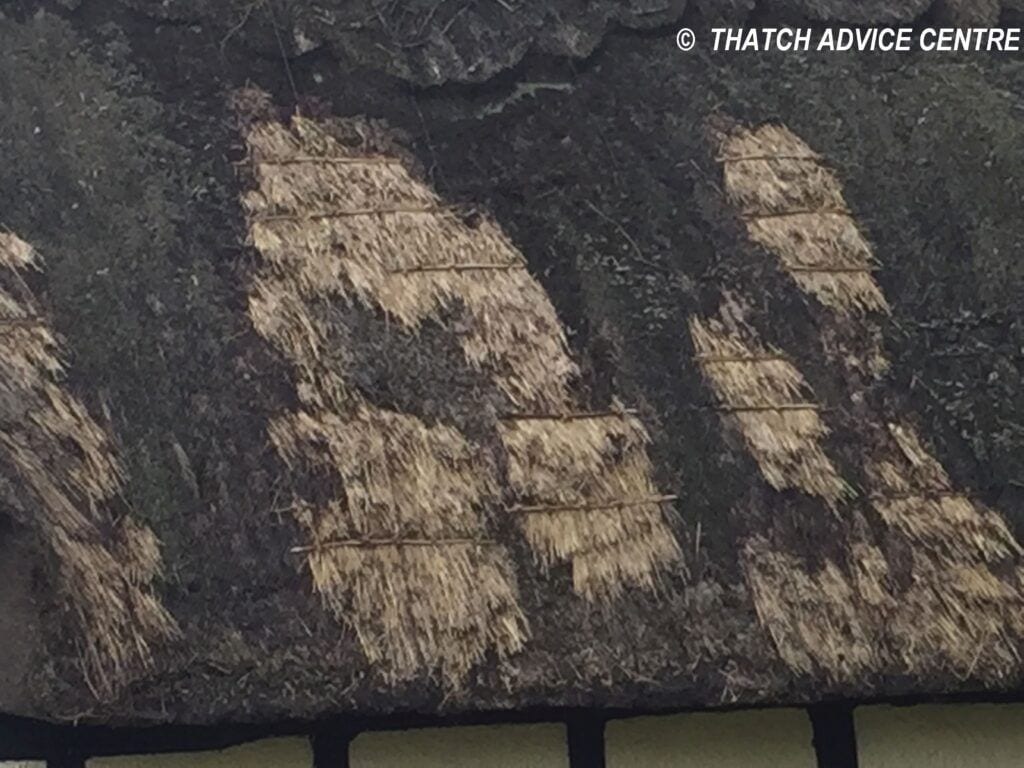
The suggestion of temporary change of materials to listed buildings we feel has three flaws:-
Firstly
The material will not be returned to Combed Wheat Reed or Longstraw, as it should be, when it is next due for rethatching. Where is the continuity in the conservation departments? homeowners? or thatchers? How would this be managed. Otherwise there will be the “like for like” conversation and it will be changed forever.
Secondly
Such a temporary change could have the knock on effect of reduced demand for straw. This would mean that less is grown. Then there is greater potential for more problems in the future with straw shortages due to lack of seed and producers.
Thirdly
When discussing using Water Reed instead ….. Perhaps we won’t discuss Water Reed supplies in this article! That’s another story!
The idea of putting on a thin layer of straw as an interim measure.
Sounds feasible but our concerns are that the homeowner is not going to want to pay for the scaffolding and the labour for a roof which won’t last very long. To then have to pay again in a short amount of time will not sit well. It is also not helpful if the property is being sold. Also there is potential for insurance claims for roofs not lasting being tracked back to this idea. It is not cost effective nor easily workable/feasible over time, in our opinion.
Don’t be tempted to do as we have heard “put alternative material on the rear of a property where it can’t be seen”.
Heavy penalties may ensue and is that worth the risk? And the detriment to the property! We are all gatekeepers of listed properties and have a responsibility to do the right thing.
Sadly, there currently seems to be a bit of a postcode lottery in Council’s responses to discussion on thatching materials.
Clarity on this would certainly make maintenance more straightforward for all concerned. There seems little point in having rules and regulations regarding thatch if they are not correctly understood, consistent, adhered to, checked or enforced. Should it be the same everywhere or is the material used not as important in some areas as repairing the roof? An interesting point of view.
With that in mind, some flexibility must prevail.
We need to continue to preserve listed buildings – thatched ones – appropriately. It will be a delicate balance but one which we are sure can be made if the lines of communication are kept open, fair and practical solutions are taken on an individual basis. Working together is so important, as we are just the gate keepers of these important buildings. We do not want to lose the materials, the knowledge and the skills for their maintenance.
More thatching straw growers are needed across the country.
This will reduce the chances of bad years’ harvests being a major problem. There will then be a greater chance of there being enough good materials available. With current climate change these areas should be looked at, supported and encouraged by all concerned. If perhaps the old straw varieties seed was more readily available that would help too. Keep an eye out for updates from us on this important topic.
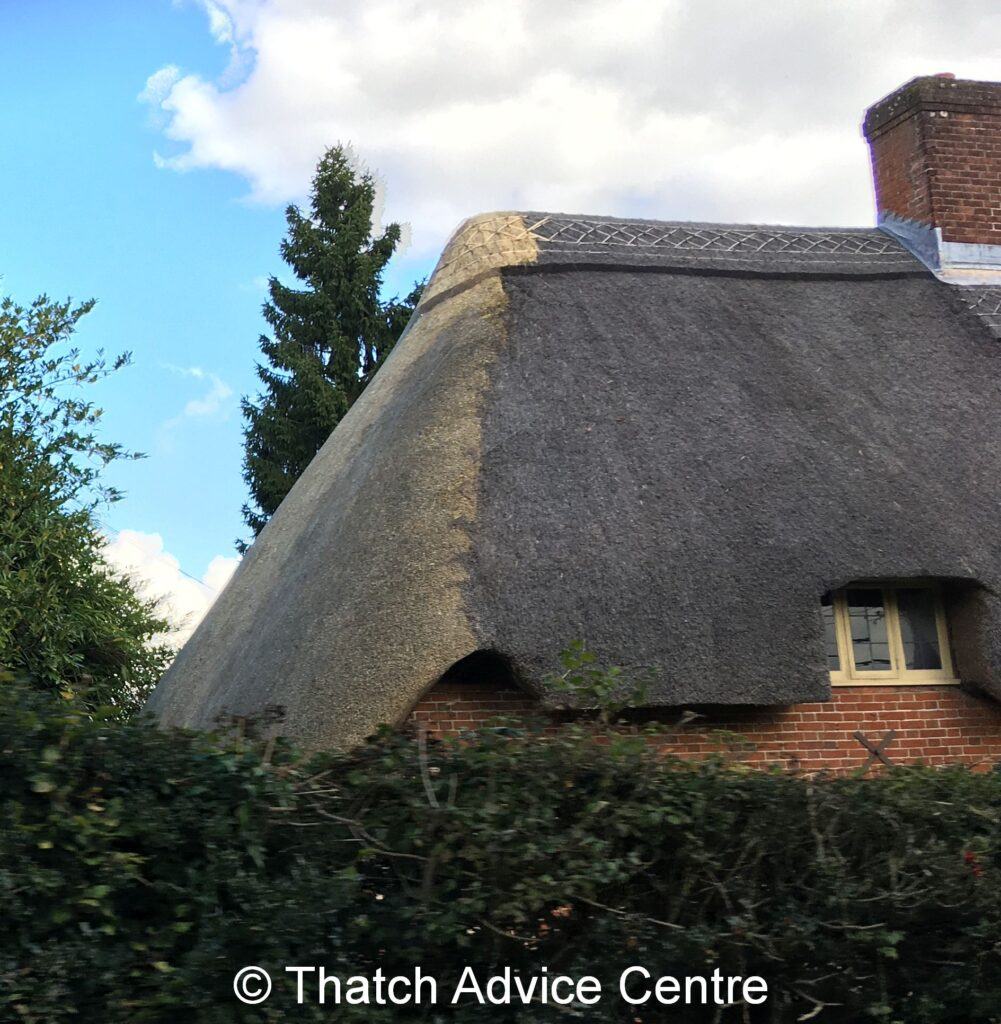
In conclusion
Homeowners:-
Understand the situation that thatching straw cannot be just taken off the shelf and that listed buildings must, by law, be rethatched/repaired with the same material. Changes require listed building consent which we feel will be unlikely to be achieved this season (unless a very good case is made) as we are already in March and only a few more months until the next harvest. However we are aware that different areas responses to similar situations seem to vary.
Thatchers
Most of you have been here before, so keep doing the right thing until next harvest and utilising materials carefully. Don’t change material on a listed building without the homeowners achieving consent. You and they have responsibility and liability. However, we re-iterate that the conservation departments still seem to be a bit of a postcode lottery in their responses regarding materials.
Everyone
Keep communicating. If in doubt ask, if we don’t know the answer we may well know someone who does or someone who can help. Working together for the good of thatched properties, listed thatch and supporting homeowners and thatchers in doing the best for their roofs is important to us. It is also important for everyone to keep the knowledge and skills in to produce, supply and apply thatching straw, and adjust to the differing harvest appropriately.
If nothing else, we hope this gives everyone something to carefully consider regarding the current thatching straw situation.
And Finally
The 2021 thatching straw harvest
It is obvious that the current crop, due to be harvested later this year, is already being discussed. Having spoken to various straw growers and suppliers the seeds are in and are growing on. It is hoped that the weather conditions will continue to allow good growth and a better harvest than last year. There are no guarantees but things are appearing, so far, to be an improvement on last year’s crop.
Our thanks to the Chairman of the National Thatching Straw Growers Association who has provided us with an interesting update from their point of view.
“ On our Suffolk farm we will have twice as many acres to harvest this year than we did in 2020. As we all know the Autumn of 2019 was terribly wet and fewer acres than normal of winter wheat for thatching were drilled, but the dry summer made up for the amount of straw by giving us a pretty good quality product. We have in the shed enough to supply our regular customers until after harvest.
The 2020 Autumn turned out to be just as bad as 2019 but this time we were better prepared and didn’t wait for that “dry spell” which we hope for and which didn’t happen. Yes, the drilled fields have suffered a bit, particularly in between the land drains but with a fair wind and another dry summer I think harvest will be better than last year. Too early now of course to predict quantity and quality but we can hope for the best. The old saying about here is, “A rain in May – plenty of wheat and long hay, a rain in June puts everything in tune”.
As chairman of the National Thatching Straw Growers Association I have heard some positive news that there are three new growers in the East, two are steam enthusiasts who have the equipment, binders, drums etc. the other is a thatcher who used to grow his own years ago and has approached a neighbouring farmer to start growing again. I do realise the demand for straw is increasing and I feel that encouraging those enthusiasts to grow just a few acres will improve supply. I shall be writing to the editor of a steam enthusiast magazine, in which we were featured in the September issue last year, about growing the right stuff instead of cutting any old modern wheat for demonstrations. “
